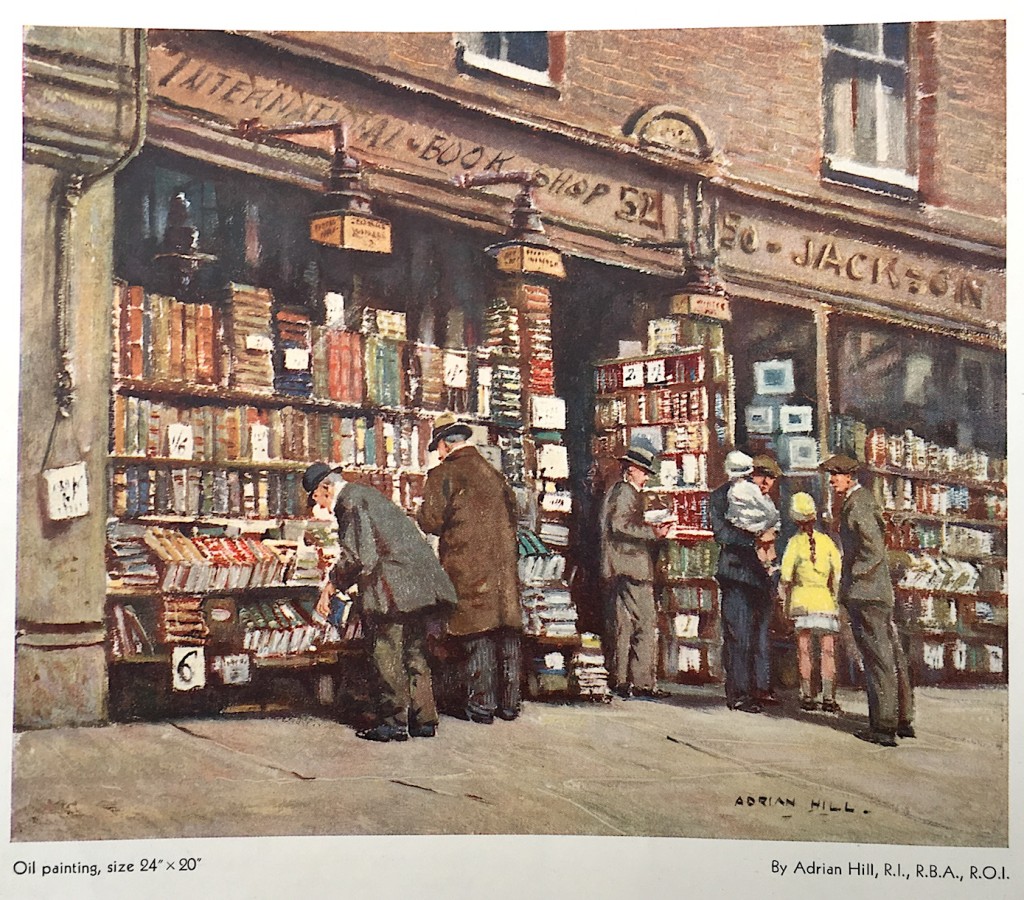 Found in the art instruction magazine The Artist (London, November 1934) an interview with the artist and art therapist Adrian Hill about his recent oil painting ‘In Charing Cross Road.’ Here are a few extracts -most of Hill’s talk is about technique, but there are some insights on the choice of subject:
Found in the art instruction magazine The Artist (London, November 1934) an interview with the artist and art therapist Adrian Hill about his recent oil painting ‘In Charing Cross Road.’ Here are a few extracts -most of Hill’s talk is about technique, but there are some insights on the choice of subject:
… there were some who questioned the impulse behind the work, and wondered whether the scene was worth the skill and discernment that the artist had brought to the task
I admit that I shared a little of this feeling. Charing Cross Road is a central and important thoroughfare, but it must rank in the C3 class amongst London highways. Indeed, there is so little of the beautiful or the picturesque about the neighbourhood that I asked Adrian Hill if the idea of sitting down to paint it came to him suddenly, or if he had deliberately hunted for such a subject.
“No, I wasn’t looking for it,” he said. “It came to me. It was a gift from the London traffic. I was waiting to cross the road when I suddenly found it in front of me, complete in design and detail, asking to be painted.”
“As far as size is concerned, did you see it as a 24″by 20″?”
“No, I thought at first of making it bigger – about 40″ by 30″ – but it was an experiment in the ay of subject, and I decided to go modest. If ever I do a similar scene, I shan’t hesitate to paint it on a grander scale!”
“You had no misgivings about tackling it inside the studio?”
“None at all. I believe I should have painted it mush less spontaneously and confidently if I had had the subject in front of me. The details would have been so insistent that I should have been led into making a still life study of books instead of an impression of a bookshop, which was what I was after.”
“But I suppose you had to use a model for the books?”
“Yes, and it wasn’t until I had arranged a line of books on a shelf, and had taken a good look at them, that I realised how extraordinarily individual and assertive books can be. Each volume seems to have a personality of its own, and to resent being repressed into mass. Another difficulty was to preserve the three planes of my picture, because the distances between the books behind the window glass, and the books arranged in front of it, and the people in the foreground, all occupy a depth of only a few feet. That’s the obvious trouble, of course, when you take a shop front as a subject for a picture.”
“How did you overcome this difficulty? You certainly have succeeded remarkably well in making all the planes hold their own.”
“I propped a sheet of glass before the back row and arranged other books in front of it, and in front of all this I placed a little bronze figure. Then I got as far away as possible from my models, and trusted to memory and experience and a bit of luck.”
